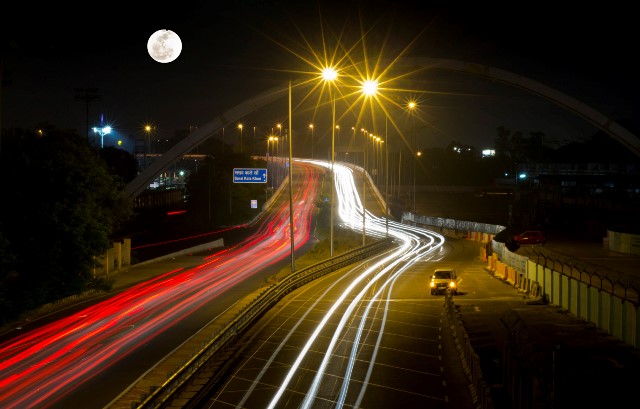A Brief Review of the Making of Smart Cities in India

What makes a City Smart? This question has become more relevant today than ever before in the history of modern urbanisation!
A city is considered Smart when it improves and develops. Here, development is primarily focused on improved technology, better infrastructure (institutional, physical, social and economic) and an integrated system of communication and information. The concept of a Smart city varies from country to country. This is also because of the varied connotations affiliated with the term development.
Smart City: A Boon
- Development not only attracts people but also attracts investors. Thus it also benefits the economy.
- Citizens of a Smart city have improved quality of life and reduced risk of diseases.
- The localities in a smart city have wide roads and well constructed buildings. They promote greenery with the availability of parks, playgrounds, and recreational spaces and also promote public transport. Necessary facilities are available on a walking distance from the locality.
- Smart cities offer online services. Citizens can enjoy these services while sitting at home via their mobile. Government can also obtain suggestions and feedback. Thus it makes the whole process citizen friendly and cost effective.
- A smart city gets its own identity. Based on local cuisine, health, education, arts and craft, culture, sports goods, textile, etc it gets it own unique traits. This also attracts tourism.
Smart City and India
100 Smart Cities Mission was launched by Prime Minister Narendra Modi in June 25, 2015. The first batch of 20 Smart cities include Bhopal, Bhubaneswar, Pune, Jaipur, Surat, Ludhiana, Kochi, Ahmedabad, Chennai, Guwahati, Udaipur, Belagavi, Kakinada, Coimbatore, Indore, NDMC (Delhi), Solapur, Jabalpur, Visakhapatnam and Devanagere.
Smart City Challenge: A Ministry of Urban Development (MoUD) programme which is using the concept of a Challenge or competition method to select cities for funding and using a strategy of area-based development. This is also helping in making different cities aware about the concept of a smart city. It also helps in initiating a healthy competition.
According to SmartCities.Gov.In, following are the strategic components of area-based development in the Smart Cities Mission:
- Retrofitting: This refers to improving an already existing area. After identifying the area, the city will come up with a smart strategy with the help of its residents. This strategy may also be completed in a shorter time frame, leading to its replication in another part of the city.
- Redevelopment: This refers to renewal of the city. The model is based on ‘replacement concept’ rather than the ‘renewal concept’.
A famous example, in this context, is that of the Saifee Burhani Upliftment Project (SBUP). According to SBUT.com the vision of this project is to redevelop South Mumbai’s vibrant but congested Bhendi Bazaar into a modern living and work space for its residents laid within the cradle of a state-of-the art and eco-friendly infrastructure.
Greenfield development: With methods like land pooling and land reconstitution, this model aims at providing affordable housing around the cities, especially for the poor. Greenfield development is aimed at addressing the problem overpopulation.
Gujarat International Finance Tec-City (GIFT) is an under-construction central business district between Ahmadabad and Gandhinagar in Gujarat. Its main purpose is to provide high quality physical infrastructure, so that finance and tech firms can relocate their operations from places where infrastructure is either inadequate or very expensive.
Pan-city development: It envisages application of selected Smart Solutions to the existing city-wide infrastructure. Application of Smart Solutions will involve the use of technology, information and data to make infrastructure and services better.
As of June 2017, 89 cities out of planned 100 cities have been selected for the smart city mission.
The Flaws in Smartness
Here are some things that the government should have had taken into account while planning a Smart City.
- Construction leads to air pollution.
- People have to give up their land. People and communities get displaced.
Farmers mobilizing against the Dholera Special Investment Region (DSIR) have made several petitions to the authorities asking for their villages to be exempted from the project. They claim that nearly 50 percent of land records in the villages are disputed and they have been allotted flood prone areas.
- Technology replaces people. It leads to decrease in job opportunities and unemployment.
The country’s software giant Infosys has released 8,000-9,000 employees in the past one year because of automation of lower-end jobs, which is confirmed by the company’s human resources head Krishnamurthy Shankar in a statement to ET.
- Lack of planning hampers the project.
According to a study led by Hugh Byrd, professor and a specialist in urban planning at the University of Lincoln, UK, the Bhendi Bazaar case study does not offer an answer to the problems of providing an adequate infrastructure to support the metabolism of such developments if they were to be significantly replicated.
Smart cities are the future for India. But the concept will only be successful if it is properly planned and executed.
Image by R. Mitra


